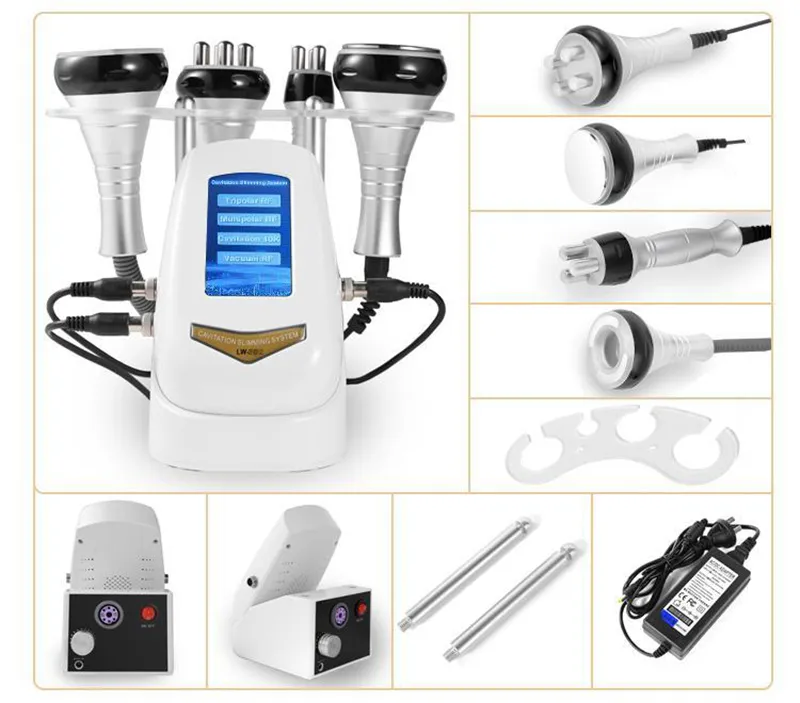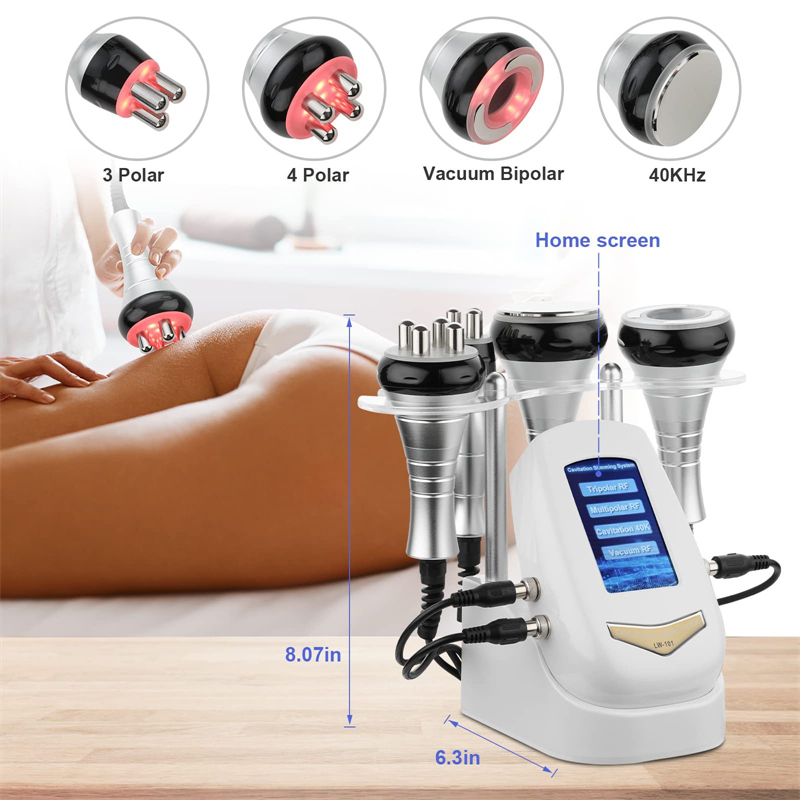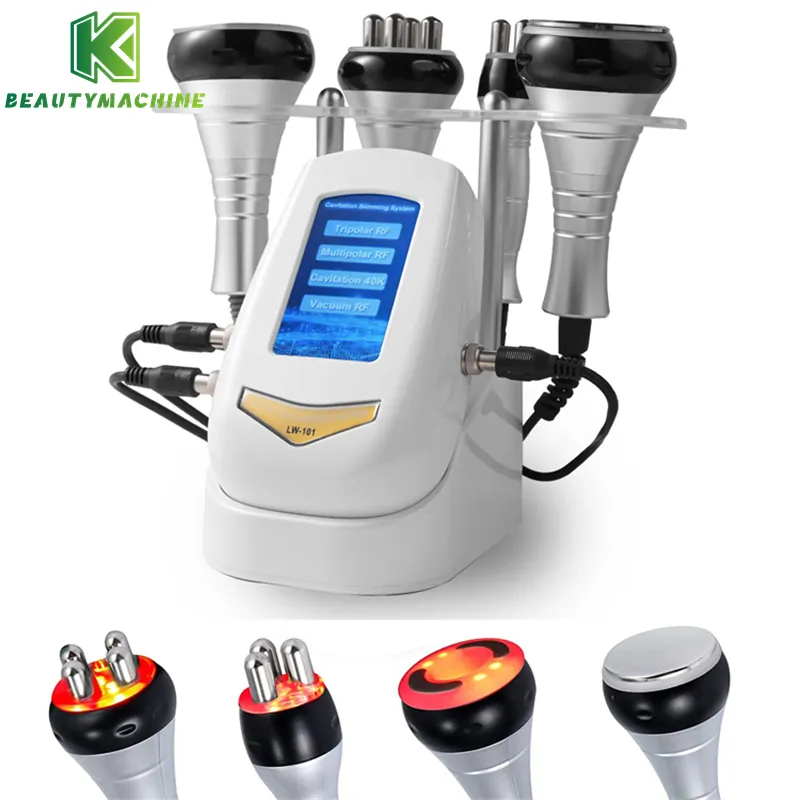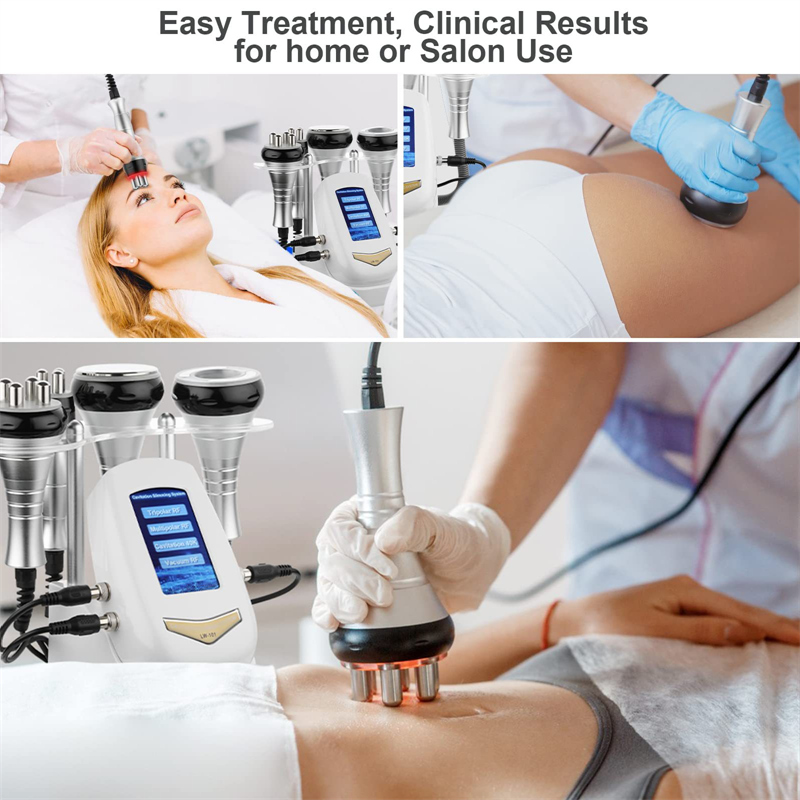
Can ultrasonic cavitation be used on the stomach?
2025-09-08 15:30
As a technique that primarily targets subcutaneous fat tissue, ultrasonic cavitation is widely used for areas of fat accumulation, such as the abdomen, thighs, and back. However, a growing number of consumers are asking, "Can ultrasonic cavitation be used on the stomach?"
This report will provide an in-depth analysis of the ultrasonic fat cavitation machine's working mechanism, anatomical and physiological structure, contraindications, and safety limits, systematically answering this key question.
What is an ultrasonic fat cavitation machine?
An ultrasonic fat cavitation machine is a non-invasive cosmetic device that uses low-frequency ultrasound (typically 25-40kHz) to create a "cavitation effect." It is primarily used for reducing subcutaneous fat, sculpting, and tightening the skin. Its operating principle is based on the cavitation phenomenon in physics: the formation and collapse of tiny bubbles in a liquid environment, generating a powerful physical impact that breaks down the fat cell membranes.
The ultrasonic fat cavitation machine acts on human fat tissue through the following steps:
• Ultrasound waves penetrate the skin and act on the fat layer;
• Cavitation bubbles are formed in the interstitial fluid of fat cells;
• The bubbles rapidly expand and collapse, creating micro-explosions;
• The fat cell membranes rupture, releasing glycerol and free fatty acids;
• These substances are excreted from the body through the lymphatic system.
Therefore, the ultrasonic fat cavitation machine primarily targets the subcutaneous fat layer, not internal organs.

Stomach Structure and Physiological Characteristics
Before answering the question, "Can ultrasonic cavitation be performed on the stomach?", we must first understand the anatomy and physiological characteristics of the human stomach.
1. Anatomical Location of the Stomach
The stomach is located in the center-left region of the upper abdomen and is surrounded by several important organs and tissue structures:
• The skin and fat tissue of the abdominal wall are located in front;
• The pancreas and spleen are located behind;
• It connects to the esophagus above and the small intestine below;
• The thickness of the subcutaneous tissue covering the front of the stomach varies from person to person and may contain a certain amount of subcutaneous fat.
2. Types of Stomach Fat
It is important to clarify that abdominal fat is divided into two types:
• Subcutaneous fat: Located between the skin and muscles, it is the target area for ultrasonic fat cavitation machines.
• Visceral fat: Surrounding organs such as the stomach and small intestine, it is stored within the abdominal cavity and is not beneath the skin's surface.
Therefore, when people refer to the "stomach," it is important to distinguish whether they are referring to the stomach itself or the subcutaneous fat outside the stomach area.

Is the ultrasonic fat cavitation machine suitable for the stomach area?
1. Analysis by fat type
As mentioned earlier, ultrasonic fat cavitation machines are only effective on subcutaneous fat; their energy cannot penetrate into the abdominal cavity. Therefore, ultrasonic fat cavitation machines cannot target visceral fat or the stomach itself.
However, if the term "stomach" refers to the subcutaneous fat layer on the outer side of the upper abdomen, then using an ultrasonic fat cavitation machine is both possible and reasonable.
2. Treatment Characteristics of the Upper Abdomen
Although subcutaneous fat is more concentrated in the upper abdomen (including the anterior stomach area), this area is also closer to vital organs. Therefore, caution is essential when using an ultrasonic fat cavitation machine:
• Ensure proper energy control during operation;
• The operating head should only target the fat areas above the skin's surface;
• Avoid excessive pressure to prevent over-focusing of energy;
• Only trained personnel are required to operate the device.
In summary, the "subcutaneous fat" in the stomach area can be treated with an ultrasonic fat cavitation machine, but the stomach itself and surrounding abdominal structures cannot be directly cavitated.

Stomach Area: Is Using an Ultrasonic Fat Cavitation Machine Safe?
1. Energy Penetration Limitations
The effective penetration depth of most ultrasonic fat cavitation machines is 1.5 to 5 cm, typically covering only subcutaneous fat and some superficial muscle tissue. The stomach, as an abdominal organ, is located deeper within the structure, and ultrasound waves cannot directly reach the stomach wall, so there is no risk of direct damage to the stomach.
However, caution is still required in the following situations:
• If the subcutaneous fat layer is too thin, the cavitation effect may be closer to the internal organs;
• If the device energy setting is too high, the ultrasound may cause deep tissue stress;
• If the treatment time is too long, it may cause tissue heat accumulation, resulting in minor skin or muscle damage.
2. Contraindications
For users planning to use an ultrasonic fat cavitation machine in the gastric area, the following individuals should exercise caution or avoid the procedure:
• Those who have undergone gastric surgery (such as gastric bypass, gastrectomy);
• Those with gastric ulcers, gastritis, or gastric tumors;
• Those with gastroesophageal reflux or gastric motility disorders;
• Those with open abdominal wounds, skin infections, or a recent history of injections.
3. Precautions Before and After Treatment
To ensure safety, the following procedures should be observed during stomach area treatment:
• Fast for at least 3 hours before treatment to avoid a full stomach;
• Avoid eating immediately after treatment; a 30-minute rest period is recommended;
• Avoid repeated high-intensity treatments on the same area;
• Use the ultrasonic fat cavitation machine only under the guidance of a qualified professional.
Ultrasonic Fat Cavitation Machine: Estimated Treatment Results for the Stomach Area
1. Fat Reduction Efficiency
The subcutaneous fat in the stomach area is firmer and thinner than in areas like the thighs and buttocks. Therefore, the amount of fat reduction from a single ultrasonic fat cavitation machine treatment may be relatively small.
Generally speaking:
• Each treatment in the stomach area results in approximately 20-50 mL of fat reduction;
• A six-treatment cycle can result in a reduction of 120-300 mL of fat content, corresponding to a fat mass of approximately 100-270 g, or 0.2-0.6 lb.
2. Visual Improvement and Circumference Changes
While fat loss may not necessarily significantly affect weight, circumference changes in the stomach area are more sensitive, potentially manifesting as:
• Waist circumference reduction of approximately 1-3 cm;
• Decreased abdominal protrusion;
• Increased abdominal skin tension.

Ultrasonic Fat Cavitation Machine: Scientific Understanding and Misconceptions
1. Cavitation Does Not "Dissolve Stomach Fat"
Some false claims about ultrasonic fat cavitation machines claiming they can "dissolve visceral fat" or "act on the stomach interior" are unscientific. Ultrasonic cavitation works only in the subcutaneous fat area and cannot penetrate the peritoneum to affect visceral tissue.
2. Ultrasound is Not an Appetite Reduction Technique
Some consumers mistakenly believe that cavitation can reduce stomach volume and appetite, which is also a misunderstanding. Ultrasonic fat cavitation machines have no direct connection to appetite control or physiological hunger; their mechanism of action is entirely based on the rupture of fat cells.
3. Maintaining a healthy lifestyle after treatment is essential
The sustainability of stomach fat reduction is closely related to individual metabolism and lifestyle. If a high-calorie diet and lack of exercise are continued after treatment, fat may re-accumulate.
Can ultrasonic cavitation be performed on the stomach?
In summary, the answer to the question, "Can ultrasonic cavitation be performed on the stomach?" should be broken down into the following two points:
√ Yes: If the treatment is targeting the subcutaneous fat layer in the stomach area, an ultrasonic fat cavitation machine can be used under professional guidance to reduce localized fat and improve abdominal contours.
• No: If the intended treatment is to target the stomach itself, regulate appetite, or treat stomach conditions, an ultrasonic fat cavitation machine is ineffective and unsuitable.
Consumers should rationally understand the limitations of ultrasonic fat cavitation machines and seek treatment under the guidance of a professional institution or medical professional. Avoid blindly pursuing results or a one-sided understanding of the technology's intended uses.
What quality control measures does KuoHai implement?
KuoHai maintains strict quality control processes covering raw materials, assembly, and final testing. Every laser beauty machine, EMS tool, and massage device undergoes performance verification before shipping. Buyers who purchase wholesale from our China factory benefit from consistent quality, competitive pricing, and factory promotions. These measures ensure you receive safe, effective, and affordable products for your business.
Get the latest price? We'll respond as soon as possible(within 12 hours)







